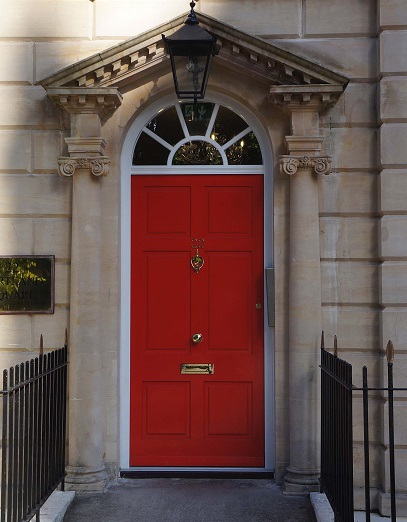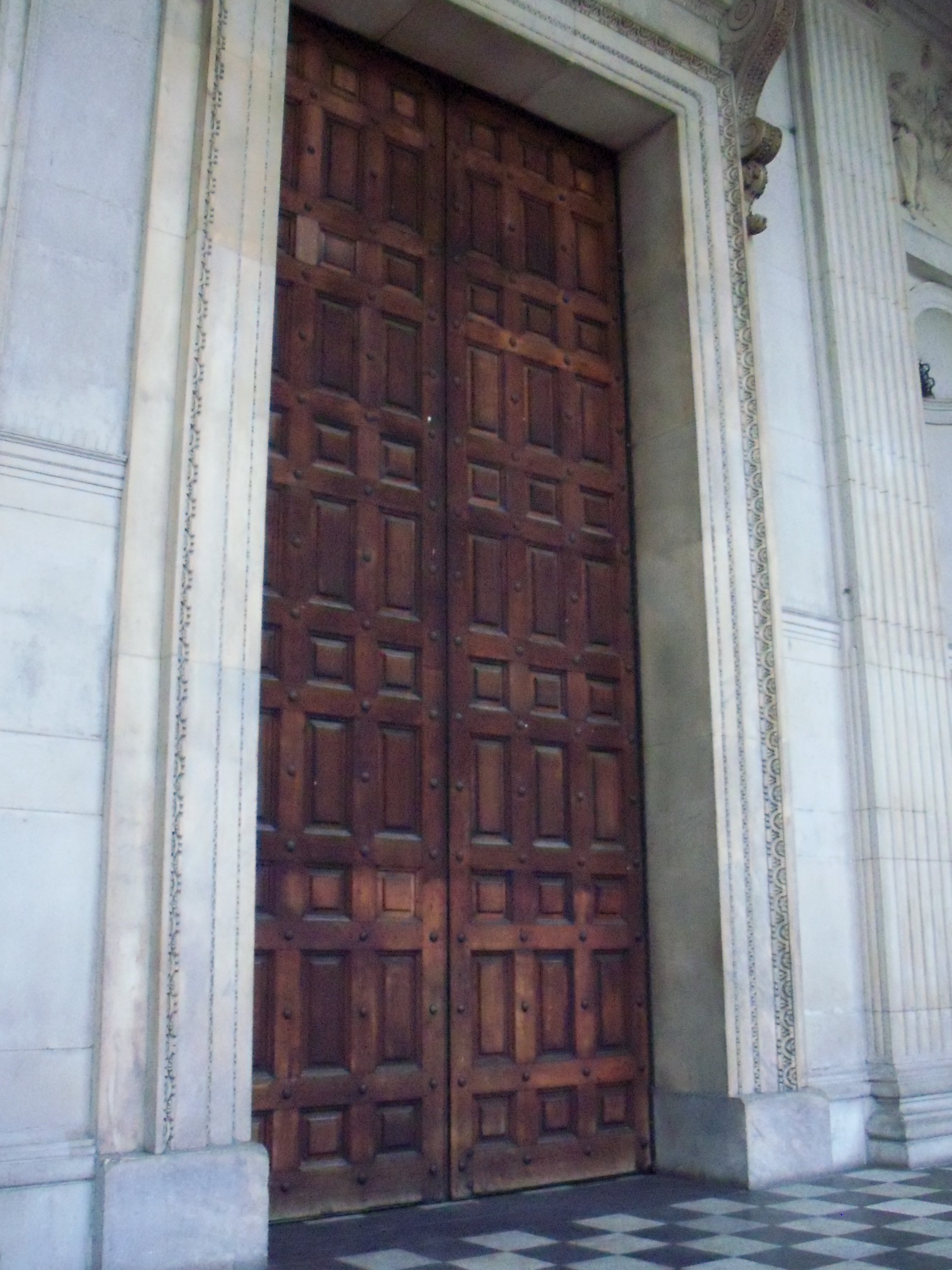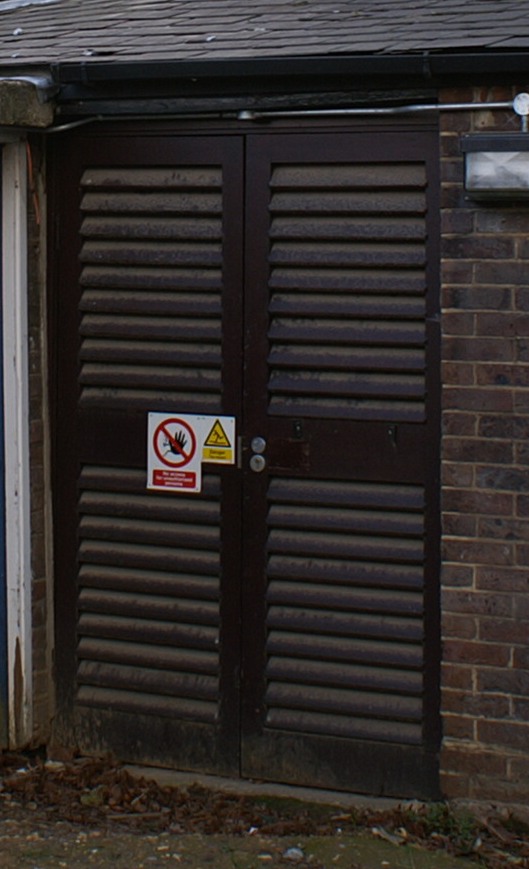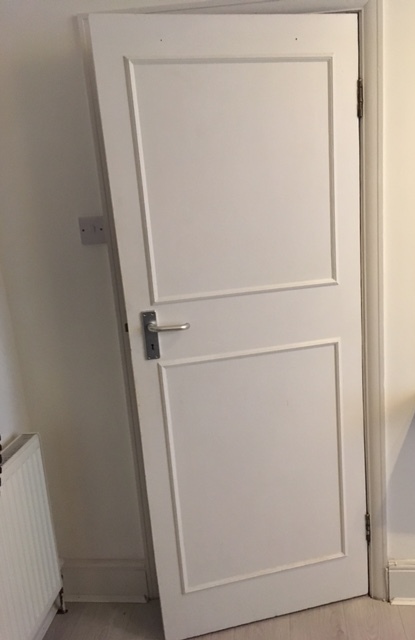Types of door

|

|

|

|
Doors are openable barriers at the entrance to buildings, rooms or other spaces such as cupboards that allow people, vehicles or goods to enter and leave. They most commonly swing on hinges and include furniture or ironmongery that allows them to open, close, stay closed and sometimes to lock.
There are many different types of doors, all with different purposes. Common types of doors include:
- Automatic door: Opens and closes automatically either by electric power or spring power, activated by sensors (e.g. pressure, motion, infrared beam, push button, etc.).
- Batwing doors: A type of saloon door that extends from knee-level to chest-level.
- Bi-fold door: Comprising several sections that open in concert and fold up against one another.
- Blind door: This has no visible trim or components and is designed to blend with the adjacent wall.
- Double-leaf door or double door: The doorway is formed by two adjacent leafs, each hinged on its outermost edges and opening out from the middle.
- False door: This is a wall decoration that is intended to resemble a door.
- Fire door: A door that is intended (when closed) to resist the passage of fire and/or gaseous products of combustion.
- Flush door: Completely smooth door, usually found in the interiors of houses.
- French door: A frame around one or more panels (either transparent or translucent).
- Half door: Also known as a Dutch door, this consists of a door that is divided in half horizontally and is often used in stables.
- Ledge and brace door: Also known as plank or batten doors, and consisting of vertical planks or narrower battens fixed together by two or more ledges (horizontal timbers).
- Lev door: An internal floor-to-ceiling door with an additional leaf installed above standard leaf (in place of header wall) enabling unrestricted passage of warm air from central heat source.
- Louvred door: Comprises fixed or moveable louvres (or fins), typically used for wardrobes.
- Pivot door: A door supported on a bearing away from the edge rather than on hinges.
- Revolving door: Comprising several leaves that radiate from a central shaft to form compartments, rotating about a vertical axis. Usually found on public and commercial buildings.
- Rolling shutter door: Typically made of steel, this type of door is usually found in warehouses, garages, shops, and so on.
- Saloon doors: Traditionally found in bars, consisting of bidirectional hinges that close the door using springs.
- Security door: Constructed using strong steel for use on vaults, safe rooms, and so on.
- Single-leaf door: A single rigid panel that fills the doorway and swings open either outwards, inwards or bi-directional.
- Sliding door: Constructed on steel sliders and typically made of glass. They slide to open, sometimes sliding into a concealed pocket in a adjacent wall.
- Wicket door: A door built into a much larger door which can be opened independently. Usually found on the entrances to cathedrals or large garage doors.
[edit] Related articles on Designing Buildings
Featured articles and news
The UK's Modern Industrial Strategy: A 10 year plan
Previous consultation criticism, current key elements and general support with some persisting reservations.
Building Safety Regulator reforms
New roles, new staff and a new fast track service pave the way for a single construction regulator.
Architectural Technologist CPDs and Communications
CIAT CPD… and how you can do it!
Cooling centres and cool spaces
Managing extreme heat in cities by directing the public to places for heat stress relief and water sources.
Winter gardens: A brief history and warm variations
Extending the season with glass in different forms and terms.
Restoring Great Yarmouth's Winter Gardens
Transforming one of the least sustainable constructions imaginable.
Construction Skills Mission Board launch sector drive
Newly formed government and industry collaboration set strategy for recruiting an additional 100,000 construction workers a year.
New Architects Code comes into effect in September 2025
ARB Architects Code of Conduct and Practice available with ongoing consultation regarding guidance.
Welsh Skills Body (Medr) launches ambitious plan
The new skills body brings together funding and regulation of tertiary education and research for the devolved nation.
Paul Gandy FCIOB announced as next CIOB President
Former Tilbury Douglas CEO takes helm.
UK Infrastructure: A 10 Year Strategy. In brief with reactions
With the National Infrastructure and Service Transformation Authority (NISTA).
Ebenezer Howard: inventor of the garden city. Book review.
The Grenfell Tower fire, eight years on
A time to pause and reflect as Dubai tower block fire reported just before anniversary.
Airtightness Topic Guide BSRIA TG 27/2025
Explaining the basics of airtightness, what it is, why it's important, when it's required and how it's carried out.
Construction contract awards hit lowest point of 2025
Plummeting for second consecutive month, intensifying concerns for housing and infrastructure goals.
Understanding Mental Health in the Built Environment 2025
Examining the state of mental health in construction, shedding light on levels of stress, anxiety and depression.
The benefits of engaging with insulation manufacturers
When considering ground floor constructions.
Lighting Industry endorses Blueprint for Electrification
The Lighting Industry Association fully supports the ECA Blueprint as a timely, urgent call to action.
























Comments
Bi-Fold doors seem to be very popular recently, I've just took the plunge and ordered up a set of aluminium bifolds to open up my living area to the garden after becoming awfully jealous of my neighbours. Whilst you can order bi-folds in UPVC or Timber I ended up picking Aluminium as they should have a longer life span and the sightlines are so slim.